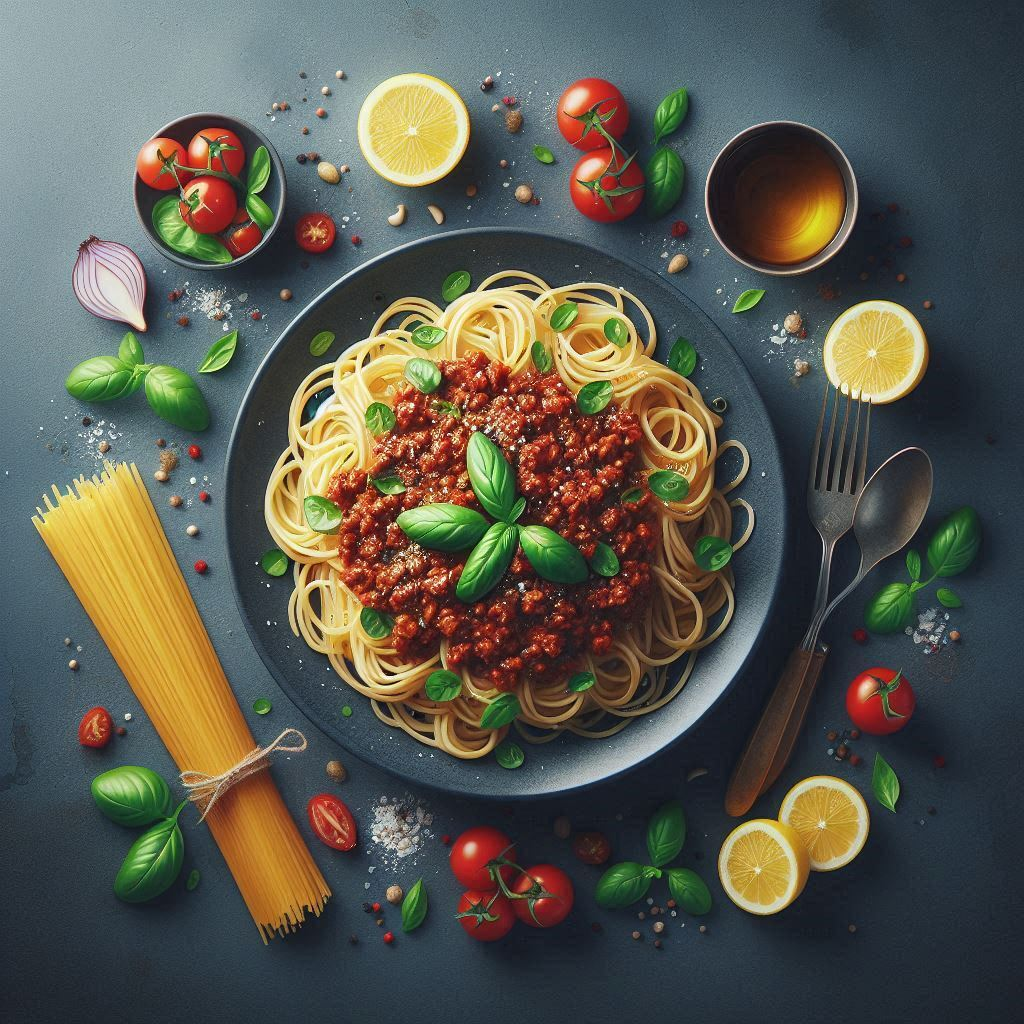
A Culinary Journey: The Story of Spaghetti Bolognese
Spaghetti Bolognese, a dish that conjures up images of cozy evenings and hearty meals, has a rich history that spans centuries and continents. While the name might suggest a purely Italian origin, the truth is more nuanced, a testament to the beautiful fusion of cultures and culinary traditions.
The Italian Roots:
The story begins in Bologna, a vibrant city in the Emilia-Romagna region of Italy. The city’s culinary heritage boasts a long tradition of meat-based sauces, influenced by the region’s agricultural abundance. Ragù alla Bolognese, the true ancestor of Spaghetti Bolognese, was born from this tradition.
Ragù alla Bolognese, a slow-cooked meat sauce, typically featuring beef, pork, and pancetta, simmered in red wine and tomato sauce, was traditionally served with tagliatelle, wide egg pasta, or tortellini, small pasta parcels filled with meat and cheese. It was a dish enjoyed by families and peasants alike, a testament to the region’s culinary ingenuity.
The Global Influence:
While the origins lie in Bologna, the journey of Spaghetti Bolognese took an unexpected turn during World War II. American soldiers stationed in Italy were introduced to the dish and brought its recipe back to the United States. The American palate, accustomed to simpler pasta dishes, embraced the hearty and flavorful sauce.
The American Transformation:
In the United States, Spaghetti Bolognese underwent a transformation. The traditional tagliatelle was replaced with spaghetti, a thinner pasta more familiar to American tastes. The sauce itself was adapted, often incorporating ground beef instead of the traditional cuts of meat, simplifying the preparation process.
A Dish for All Seasons:
Today, Spaghetti Bolognese remains a beloved dish worldwide. Its versatility and adaptability make it a culinary chameleon, easily customized to suit individual preferences. Whether it’s the addition of vegetables like carrots and celery, the use of different types of meat, or the incorporation of herbs and spices, the basic principles remain the same: a slow-cooked, flavorful sauce that embodies the spirit of Italian comfort food.
The Art of Preparation:
Ingredients:
- 1 pound ground beef
- 1/2 pound ground pork
- 1/2 cup chopped pancetta
- 1 large onion, chopped
- 2 carrots, chopped
- 2 celery stalks, chopped
- 2 cloves garlic, minced
- 1 (28 ounce) can crushed tomatoes
- 1 (14.5 ounce) can diced tomatoes
- 1 cup red wine
- 1/2 cup beef broth
- 1 teaspoon dried oregano
- 1/2 teaspoon dried basil
- Salt and pepper to taste
- 1 pound spaghetti
- Parmesan cheese, for serving
Instructions:
- Brown the meat: In a large pot or Dutch oven, brown the ground beef, ground pork, and pancetta over medium heat. Drain off any excess fat.
- Sauté the vegetables: Add the onion, carrots, and celery to the pot and sauté until softened, about 5 minutes.
- Add the garlic: Stir in the minced garlic and cook for 1 minute more.
- Combine the sauce ingredients: Add the crushed tomatoes, diced tomatoes, red wine, beef broth, oregano, and basil to the pot. Season with salt and pepper to taste.
- Simmer: Bring the sauce to a simmer, then reduce heat and cover. Simmer for at least 2 hours, stirring occasionally.
- Cook the spaghetti: While the sauce is simmering, cook the spaghetti according to package directions.
- Serve: Drain the spaghetti and toss with the Bolognese sauce. Top with Parmesan cheese and serve immediately.
Tips and Variations:
- For a richer flavor, use a combination of beef, pork, and veal for the meat base.
- Add a pinch of sugar to the sauce to balance the acidity of the tomatoes.
- For a vegetarian version, use plant-based ground meat alternatives.
- Experiment with different herbs and spices, such as thyme, rosemary, or bay leaves.
- Garnish with fresh parsley or basil for a vibrant touch.
Enjoy the Journey:
As you prepare this dish, remember the journey of Spaghetti Bolognese, a testament to the fusion of cultures and the enduring power of food to connect us. Each bite tells a story, a story of culinary innovation, adaptation, and the universal love for a good, hearty meal.



